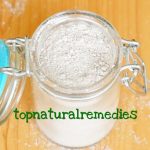Consume These Foods for a Healthier and Beautiful Skin
There are numerous common skin affections that appear even throughout adulthood, not just during teenage years.

Aging attracts various factors that endanger the health of the cutaneous tissue. Skin, the largest organ of the body, is composed of superficial, protective barriers that prevent environmental pathogen agents from entering our organism.
When the body suffers, sickness signs can often be visible at the skin level. In order to stay healthy and prevent dermatological problems, we recommend using the following foods:
Contents
Avocado
Used internally or externally, avocado contributes to maintaining the skin health, due to its rich amount of vitamin A, D, and E.
Cucumbers
Highly valued in Ancient History by Greeks, Egyptians, and Romans, cucumbers were known for their general healing properties, as well for the benefits they brought to the skin.
Against dermatological problems, a few cucumbers should be washed, chopped and blended. The paste obtained is applied directly on the area presenting the problems, after which it is left to act for 15-30 minutes. Optionally, you can add an avocado to the cucumbers. Avocado oil is a known remedy for some forms of dermatitis.
Flaxseeds
The rich amount of Omega-3 fatty acids in flaxseeds provides benefits for those suffering from dermatological problems. Consume one tablespoon of flaxseeds daily or grind two teaspoons of the ingredient and add it to your regular food.
Coldwater fish
Fish is one of the best sources of Omega-3. Some of the most recommended are fat fish that live in cold waters, some common examples being salmon and sardines. For a healthier skin, consume fat fish two times a week: mackerel and tuna are two other good choices.
Cauliflower
Vitamin B6 deficiencies encourage the appearance of dermatological problems, one of them being dermatitis. Cauliflower contains this crucial vitamin and, with regular consumption, is able to prevent or reduce these problems. Other rich sources of vitamin B6 are bananas, spinach, and gumbo.
Milk applied externally
Cold milk compresses soothe the skin and relieve itchiness. Put a piece of absorbent cloth in milk, let it sit for 2-3 minutes on your skin, then repeat the procedure for 10 minutes.
Foods that you should be careful about
- Eggs, peanuts, soy, wheat and fish (other than the ones mentioned) are foods that, for some persons with increased sensitivity, can cause more severe symptoms when it comes to dermatitis.
- This condition can also be triggered by consumption of alcohol, coffee, chocolate, tomatoes, and sugar.
- A Mexican summer cocktail, also known as Margarita, contains, among others, lime juice. When the skin comes into contact with it, the area becomes sensitive to light, triggering an allergic reaction.
- Also, when it comes to sensitive persons, hormones from cow milk can lead to the appearance of acne, adults including, worsening its evolution. If you know that you can’t tolerate this type of milk, use soy milk as an alternative.
Skin health is often tied to what we eat, with plenty of solutions to be found in nature.



